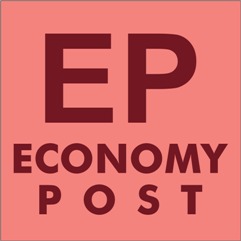Air pollution, which is among the most potent environmental and health challenges facing the world, could be lowering age of the Lucknow residents by 6.5 years, a latest scientific report has claimed.
The report ‘From Gridlock to Green Inclusive Mobility – Analysing Traffic Air Quality, and Public Transport Opportunities in Lucknow’ analysed the socio-economic impact of new vehicle registration, traffic congestion, and air pollution.
The ground-level evidence, research and assessment done in collaboration with the IIT BHU and Enviro Catalyst aims to anchor clean and inclusive mobility in public consciousness and influence decision-making processes.
‘The Climate Agenda’, a grassroot-driven non-profit organisation working to foster climate awareness, released two commissioned reports in Lucknow yesterday.
The other report is titled ‘Assessment of Uttar Pradesh Electric Vehicle Manufacturing and Mobility Policy 2022’.
With the highest vehicle population in India and severe air quality challenges across its urban centers, UP stands at a critical juncture to lead India’s electric vehicle (EV) transition, the organisers said.
According to TomTom Traffic Data from August 2024, the congestion at various traffic corridors showed that most parts of Lucknow experienced chronic congestion – revealing a significant variation between weekdays and weekend traffic patterns.
Analysis shows that the peak congestion occurs daily between 5:00 PM and 8:00 PM, when median traffic speeds reach their lowest levels followed by the daytime interval (10 AM-5 PM) which is the second most congested period.
The data reflected on the severe impact on health caused by air pollution due to emissions from the traffic congestion.
Citing ‘The Chicago Energy Policy Institute’ 2020 report that calculated life expectancy impacts of air pollution based on national standards in Lucknow mentions that it may have caused residents to lose 6.5 years of their lives compared to living in a region meeting the WHO stipulated safe guidelines for PM2.5.
The report states that if Lucknow had met the National Ambient Quality Standards set by the Central Pollution Control Board (CPCB), residents could have lived 3 years more.
Highlighting the current state of public and private transport in Lucknow, report reveals that residents rely on privately owned vehicles (51% two-wheeler and 29% private car registered as of 2023-2024 registration data) over public transport causing long hours of traffic congestions and significant increase in air pollution at breathing heights.
Highlighting the findings of the report, Ekta Shekhar, Director – The Climate Agenda, said, “Both studies underline the need for a comprehensive strategy to transform the state into a competitive hub for investment, innovation, and sustainable urban living.”
“Our call-to-action through these findings is to start a discourse at political and policy leadership for making people-centric, inclusive and climate-resilient urban mobility,” she added.
The ‘Uttar Pradesh Electric Vehicle Manufacturing and Mobility Policy 2022’ report presents a detailed gap analysis, identifying areas where the policy can be strengthened to match the clarity, inclusivity, and depth of more advanced EV frameworks.
It highlights 37 forward-looking opportunities to amplify the policy’s impact, with a focus on performance standards, financial access, social equity, infrastructure development, and green industrial growth.
These insights provide practical, actionable recommendations to help UP emerge as a national frontrunner in electric mobility.
The assessment underlines that as EV adoption accelerates nationwide, the time is opportune for UP to refine its approach by incorporating emerging best practices and learnings from other leading states.
Sunil Dahiya, Founder & Lead Analyst, Envirocatalysts, noted that Lucknow’s challenges like traffic congestion, air pollution, and preference for private transport are interlinked and demand urgent solutions.
“The recommendations reflect lived experiences bringing forward real commuter voices and dependable data, showing that with the right policies and infrastructure, the city can lead India’s shift to clean mobility,” he added.
Dr Abhisek Mudgal, Assistant Professor, Civil Engineering, IIT (BHU), noted Lucknow like many other urban areas is at a crossroads where smart traffic management, stronger bus corridors, and clean mobility can cut vehicular emissions and ease traffic congestion.
“With continued support from the government, Lucknow can emerge as a model where sustainable growth and clean air go together,” he added.
The reports are commissioned by The Climate Agenda, with EnviroCatalysts and IIT-BHU leading the empirical research mandate.
The report is jointly published by Harit Safar and Sustainable Urban Mobility Collective (SUMC).

